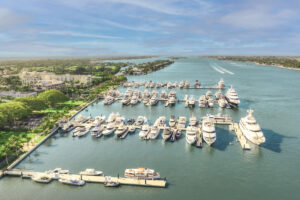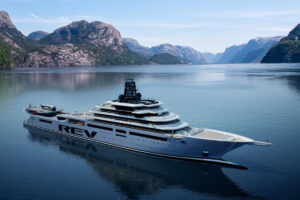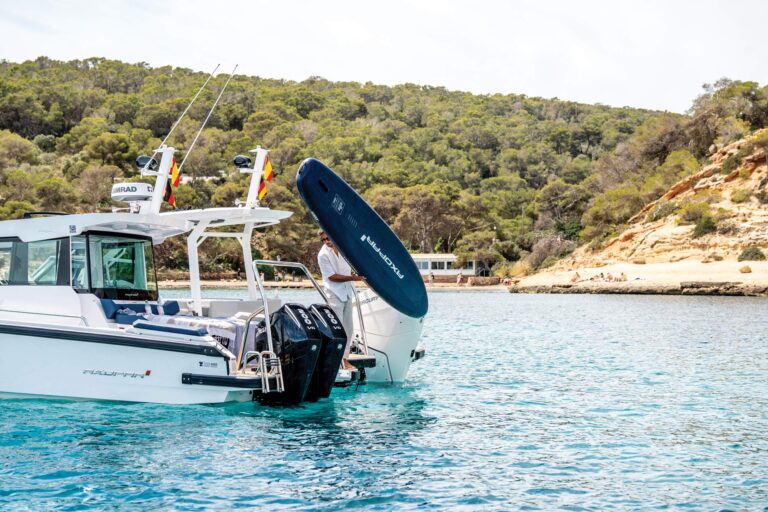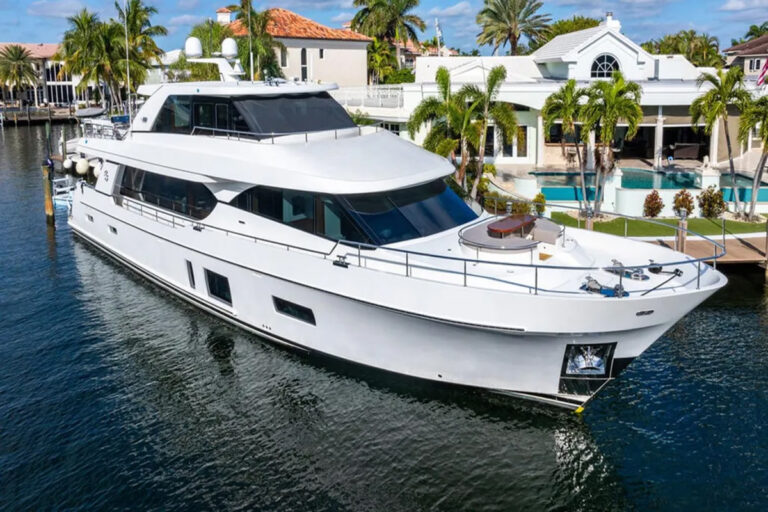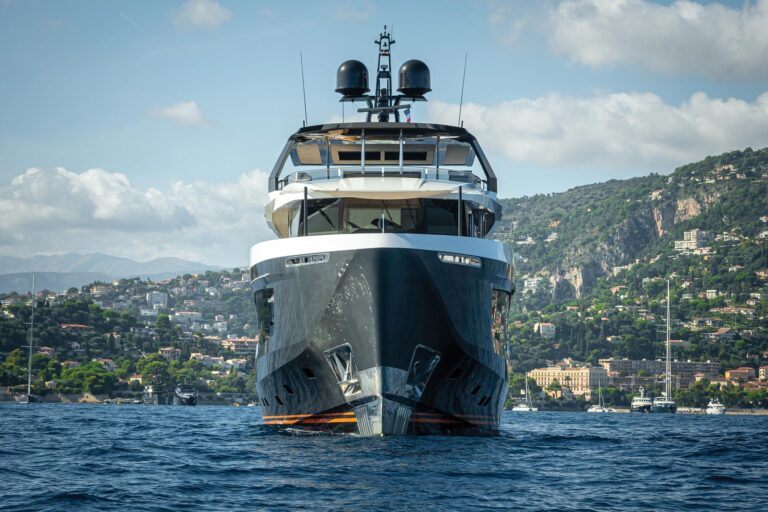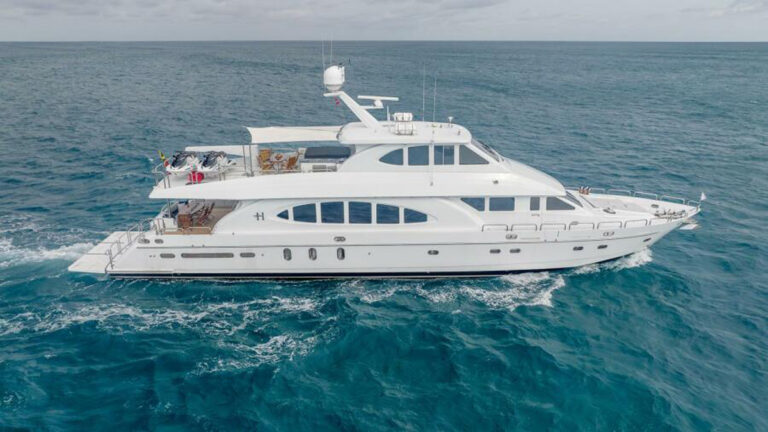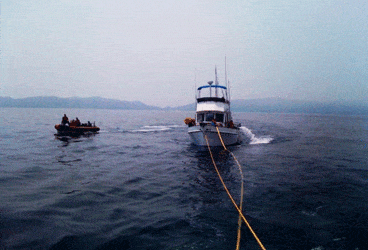
Through my dive mask I see the woman climb over the aft rail and down onto the swim platform. Her husband hands her their 4-month old baby and then looks down into the water at me. He looks like he can’t believe what’s happening. Turning, he yells something to his 13-year old daughter behind him. The 70-knot wind is so loud in my ears that I can’t hear anything; I can’t hear what he is saying, I can’t hear the helicopter, I can’t even hear my own voice shouting over the waves, “Now! Jump now!”
The boat rises and falls and I’m waving the woman into the water but she doesn’t jump. She just leans over, looks toward me, and lets go of the rail. Falling into the ocean with her baby, a breaking wave washes them just out of reach and takes them under. “They’re wearing life jackets, they’ll resurface,” I think. Later I would learn that at that very moment, pilot Dave Gunderson was asking his co-pilot, “How is he going to keep that baby alive in the water like that?” If he knew I was worried about the same thing, he never would have sent me out the door – 400 miles from anywhere – into the storm-torn Atlantic.
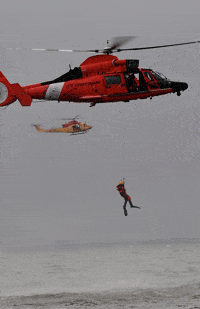
Ira Hubbard, the owner of the Marine Flower II, was certain he and his family would be safely tied up in Bermuda by now. But here he was, helping his wife and children into the open ocean and abandoning his boat forever. Fifteen minutes and four incredibly risky helicopter hoists later, they were safely in the back of our helicopter and we were all heading home. Little Ira Hubbard Jr. – the youngest victim ever rescued by helicopter from the open ocean – never so much as shed a tear.
With 15 years of experience between then and now, I’ve seen that look of disbelief way too often. Sure, most boaters have the necessary emergency equipment on board, but almost always seem unprepared to be using it. As a guy who’s been at the end of some very bad days, I’m here to remind you that your boat is heavier than water, and can sink. There are things you can do to be ready for that possibility, and increase your chances of surviving the sinking that no one ever expects.
Lieutenant Commander Dan Molthen, the co-pilot on that November 1994 rescue mentioned above, has two decades’ worth of experience in maritime search and rescue. A veteran of literally hundreds of lifesaving missions, Dan knows what works and what doesn’t when it comes to making it home when your boat can’t. Recently, we sat together and discussed the business of being a sailor’s last hope, and what really separates those who lived from the others.
Survivors Call Early
“Sooner is always better than later when it comes to calling for help,” Molthen said. Too often, boaters will try and work the problem themselves, waiting until the water is at their knees to grab the radio. “Let [the Coast Guard] know that you’re having a problem, and where you are, at the first sign of trouble – even if you think you can manage without help.” There are a number of things rescue organizations can do – without launching a full rescue – that can dramatically increase your chances of coming home should things get worse. These include monitoring your position and track, and having other vessels in the area lend assistance or standby until the emergency is over. Make the first call early, and options remain open.
Don’t think of your EPIRB as a fail-safe tool for any emergency. They are certainly a must-have piece of equipment, but few understand that it can take as long as four hours for a 406 EPIRB without onboard GPS to relay your approximate (within 3 miles) position to rescuers. A lot can happen in four hours, and the difference between your reported position and your actual position can be off by miles when the search begins. Programming your VHF Radio with your Maritime Mobile Service Identity (MMSI) number adds a powerful tool to your distress alerting arsenal, but like EPIRB registrations, the phone numbers listed should help rescuers gain usable information about your situation, not just notify loved ones that you are in trouble.
A Real Float Plan
“Boaters rely too much on the electronics to save them,” warns Molthen. “If all we get is an overdue call from the family – and that happens a lot – all we have to go on is what we are told by the people at home.” Too often, families can only tell you what “usually” happens, e.g., “He is usually back by dark,” or “He usually refuels in Charleston.” A real float plan includes important details about the vessel and the trip, including paint scheme and major gear aboard (life raft, dinghy, PWCs), the names and ages of everyone aboard, and the intended route the vessel will take.
I asked Molthen how many times in his career he had seen a real float plan. “Never,” he said, without much hesitation. I couldn’t remember one either, and we both considered how many times we flew back empty – for want of a piece of paper with a plan on it, stuck to the fridge at home.

